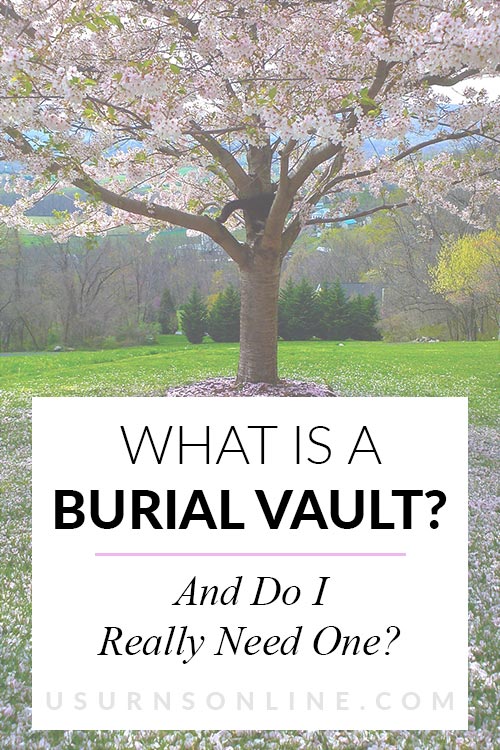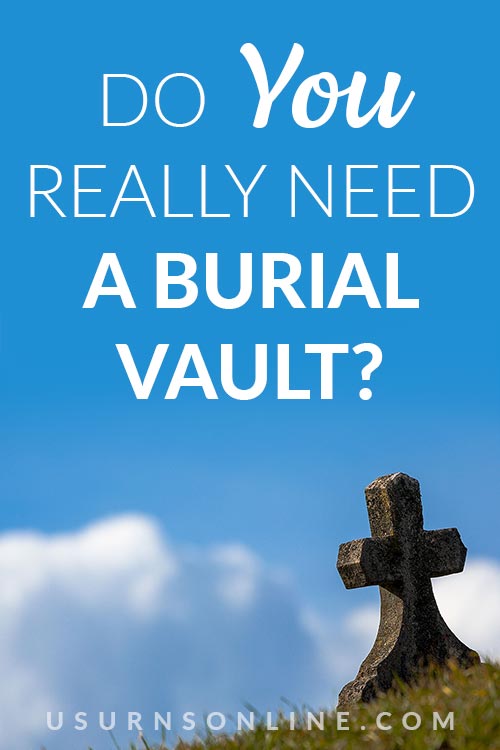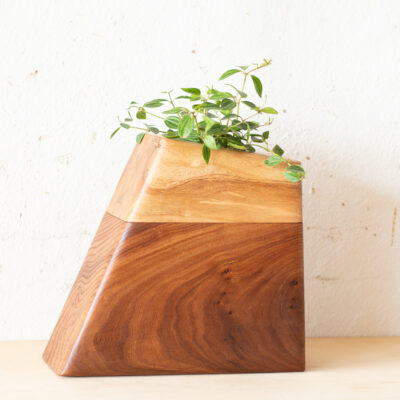Burial vaults are some the largest (and most expensive) funeral products. If your funeral plans involve burial, you’re going to need to make a decision about which one to purchase – if you purchase one at all.
You probably have questions. Do I need a burial vault? What’s the difference between that and a grave liner? How well do these protect the casket, and my loved one?
Here’s what you need to know about burial vaults.
Outer Burial Containers
Burial vaults and grave liners are the two types of outer burial containers. These surround the casket and create a barrier between the casket and the earth while protecting the integrity of the cemetery landscape. The ground will not sink nor will the headstone become unstable.
For this reason, many cemeteries require an outer burial container when burying a casket.
Burial Vaults
A burial vault is a sealed, lined outer container that holds the casket when it is placed into the ground. It protects the casket from the physical mass of the dirt and the heavy equipment that will drive on top of the grave.
Essentially, a burial vault is a reinforced concrete box. It has a heavy-duty plastic liner or a metal liner inside the box along with seals between the lid and the box.
The design of the vault keeps water and dirt away from the casket. This keep the casket in good condition for a longer period of time. Vaults also protect the headstone by preventing the ground from settling under and around it.
A typical vault’s exterior dimensions are around 90″ x 34″ x 33″, with interior dimensions at about 86″ x 30″ x 25.5″. This may vary by product, manufacturer, and facility.
Grave Liners
A grave liner is a burial receptacle placed in the ground in a cemetery to maintain the integrity of the cemetery grounds. Unlike a burial vault, the liner is not meant to protect and seal the casket.
Urns Made in the USA
You can call a grave liner a concrete box, a rough box, or a grave receptacle; all mean the same same thing. It is either a sectional, dome, or box form. Its purpose is to support the weight of the earth and standard cemetery maintenance equipment and to prevent the grave from collapsing.
The manufacturers make grave liners out of reinforced concrete. The porosity allows water to seep into the liner causing the casket to deteriorate.
Sometimes the grave liner has drainage holes drilled into the bottom of it, but often the grave liner doesn’t even have a bottom; it has no seals of any kind. The grave liners usually meet the minimum requirements of the cemetery.
A grave liner’s exterior dimensions are approximately 84″ x 33″ x 30″.
Read: Our Favorite *Actually* Free Funeral Program Templates
Burial Vault FAQ
What is the difference between a burial vault and a grave liner?
A burial vault and a grave liner serve the same purpose, which is to protect the casket from being crushed by the ground and keep the ground from sinking in.
The main difference is that the vault offers much better protection for the casket than a grave liner because the vault seals and helps protect the casket from moisture damage.
Do I really need a burial vault or liner?
Burial vaults are not required by federal, state, or local governments. However, many local cemeteries will require them in order to protect the integrity and beauty of the cemetery landscaping.
In short, the cemeteries make the rules on the vaults and liners. If you want your loved one to be buried in a particular cemetery, you will need to follow their guidelines, which may require an outer burial container.
Placing a casketed body in a mausoleum does not require a vault or liner.
Related: 13 Questions You Should Ask When Choosing a Cemetery
How much are vaults for burial?
Typical prices for simple grave liners can start at $700, while high-end burial vaults can reach $12,000 or more. Expect to pay $3,000-7,000 for a good quality protective burial vault.
How long do burial vaults last?
Most manufacturers like Trigard, Wilbert, Tribute, and others offer a warranty on their burial vaults. These warranties typically last between 50 and 100 years and cover the entrance of any moisture into the sealed vault.
The concrete structure itself will last longer, but, like anything, will deteriorate over time. See each manufacturer’s website for more information.
Why do some cemeteries require burial vaults?
The primary reason behind burial vaults is not, as is often thought, to protect the casket. Cemeteries use burial vaults chiefly to protect the landscaping and the integrity of the grounds.
Any casket will begin to break down as time passes, even inside a well-sealed burial vault. This causes the earth to collapse, creating an unsightly dip. Cemeteries use burial vaults and grave liners to prevent this as much as possible.
Additionally, the cemetery uses heavy maintenance equipment to dig new graves and for other projects such as mowing. Burial vaults ensure that the grave site can handle that type of machinery operating on or near it.
Burial Vaults for Caskets
Vaults are constructed out of different materials. These materials include reinforced plastic, concrete, asphalt, steel rods, and steel wires. They range in price from a few hundred dollars to thousands of dollars.
Types of Vaults
Urn Vaults. If you’re burying an urn, an urn vault ensures the cremated remains are kept safe from the underground elements. Just like caskets, urns don’t always have an airtight seal so a vault will keep the urn and contents protected. Learn more about cremation urn burial vaults here.
Grave Liners. As explained above, a liner doesn’t give the same protection as a vault. A liner is made from concrete, does not seal, and will allow dirt and water to accumulate around the casket. The vault will protect the earth above the casket from shifting and sinking in.
Metal or Concrete Vaults. Just like caskets, metal vaults come in a variety of metal choices. You can choose from steel, copper, or bronze. Concrete vaults are extremely safe and won’t decay quickly. Concrete vaults are usually the most expensive vault you can buy. Metal and concrete vaults are lined with reinforced plastic. The plastic is nonporous, and doesn’t allow water to seep into it. The casket is kept safe and dry.
Materials
Materials vary from grave liners to vaults.
- Concrete. Least expensive of all materials. Grave liners are made from concrete.
- Steel. Most cost-effective metal.
- Bronze. Mid-priced metal.
- Copper. Most expensive metal.
- Steel rods and wire. Used for reinforcement.
- Reinforced plastic. Used for the liner inside a vault.
Personalization Options
Vaults can be highly personalized and made to reflect the personality of the deceased.
- Nameplate. Name and dates of deceased.
- Emblem. Cross, Star of David, Military Emblem, and many others to choose from.
- Colors. Choice of colors from a palette the company provides.
- Decorative Handles. Just like with caskets (or kitchen cabinets), vaults come with many handle options.
- Photographs. Family chosen photos are made into a collage and applied to the top of the vault.
Related: How to Decorate a Grave (+50 Ideas & Tips)
Burial Vaults for Urns
Whether the cemetery insists on it or not, if you are planning an in-ground burial, you will want to consider an urn vault.
An urn vault is a lined and sealed outer container that encloses the urn. The vaults for urns can be made of concrete. The manufacturers reinforce them with different lining materials. These materials include copper, stainless steel, bronze, and impact-resistant plastic.
Your urn vault provides protection from the elements while keeping the ground from settling. There are several types and sizes available to fit most cremation urns.
Learn more: Using Burial Vaults to Bury and Protect Your Cremation Urn
Urns That Don’t Require a Burial Vault
There are some urns that do not require a burial vault. These urns can be made from marble, granite, or can be biodegradable.
Read more: 20 Best Cremation Urns That You Can Bury
Burial Options that Don’t Require a Vault
There are options out there if you don’t want to use a vault.
- Natural or Green Burial. You can bury a body in an eco-friendly, biodegradable casket or shroud. Read more >>
- Home Burial. Bury the body on your own land without placing the body or casket in a vault. Read more >>
- Scattering Cremated Remains. You can scatter cremated remains on your own land without anyone’s permission. If you are scattering anywhere else, please be aware of the laws and ask before you scatter. Scattering, of course, does not require a vault. Read more >>
- Keeping Cremated Remains at Home. Keeping your loved one’s cremated remains at home does not require a vault. You just need a receptacle to hold the cremains in. Read more >>
The use of burial vaults isn’t always necessary. In most cases, a grave liner is a minimum way to satisfy cemetery requirements.
If you don’t have a cemetery preference, call around and find out the requirements in your area. Your budget might also factor into the decision of purchasing a vault or a grave liner. (Here’s what to expect for funeral expenses.) These burial decisions are up to you.
Read next: 10 Things NOT to Do in a Cemetery





